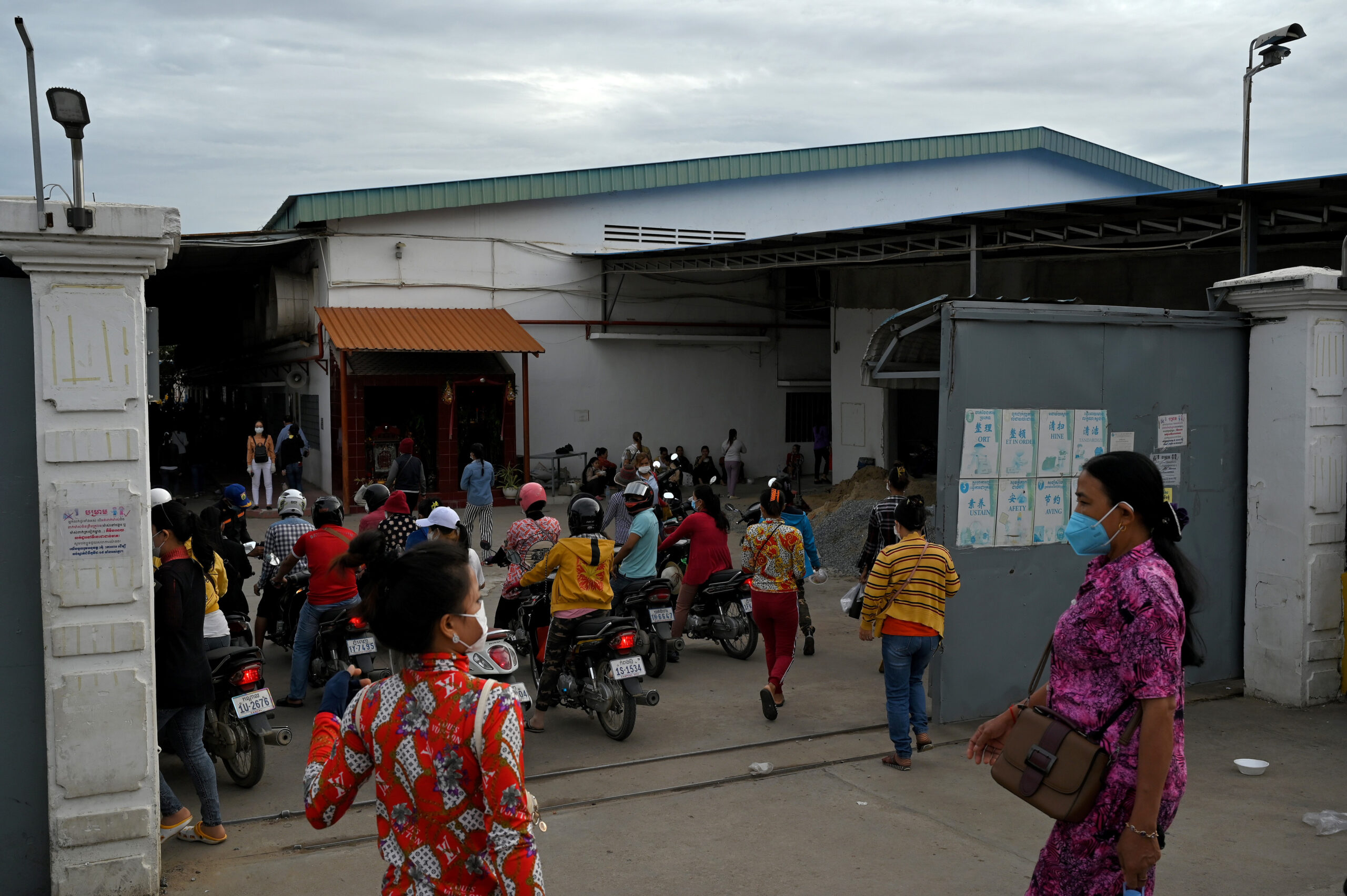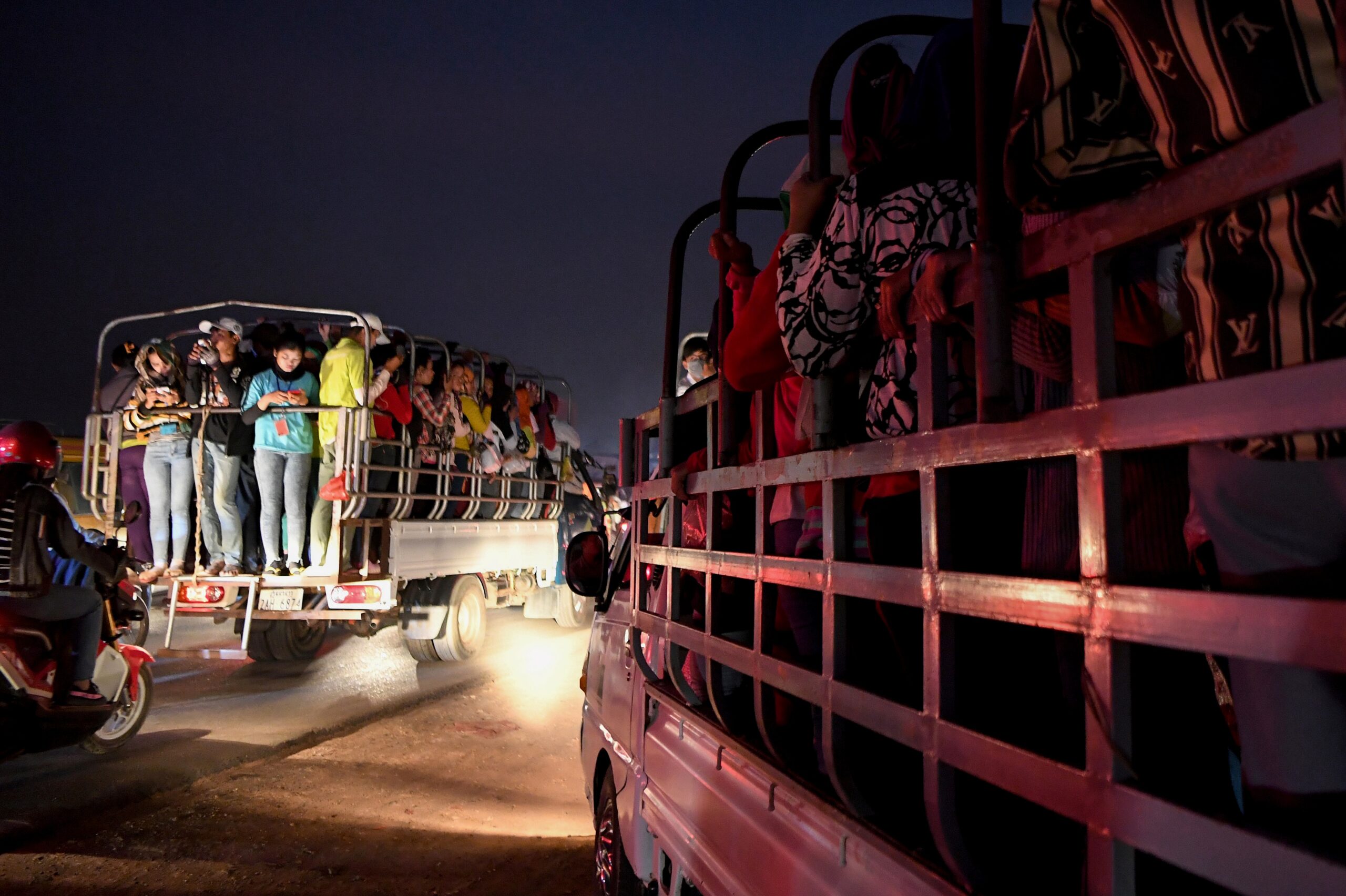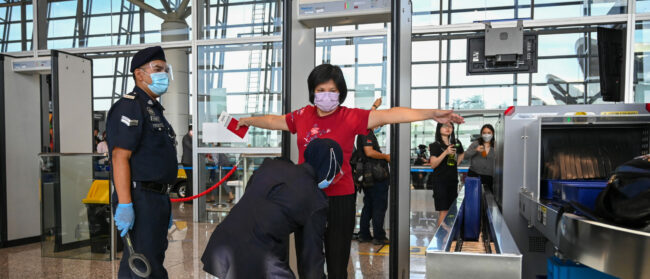Early on the morning of 12 February while heading to her shift at the garment factory in Kampong Speu province, Soth Vy was the last of about 40 workers to climb onto the standing platform of the truck that came to her village. She enjoyed the cool breeze as she stood at the back in the dark of dawn.
“The next thing I remember was the truck suddenly slowing down… then, gradually, it veered off the road,” she said. “And then we fell into a ditch. Then I remember that I was hit by a heavy weight.”
Sandwiched beneath a dozen other passengers, Vy’s hamstring snapped from the crush of people falling on her in the ditch, their weight causing blood clots in her chest, abdomen and ribs.
What should have been an ordinary commute for the 25-year-old, like the more than 200,000 garment factory workers in Cambodia who AIP Foundation says rely on collective transport vehicles, ended with injuries that may have life-changing effects for her.
Road accidents involving garment worker transportation remains a big problem in the Kingdom. There were 2,206 garment workers who became casualties of accidents in 2020, equivalent to 183 per month. Thirty died and 467 sustained serious injuries, as in the case of Vy, according to a September 2021 study by the Centre for Policy Studies (CPS).
Large numbers of workers – as many as 60 at a time – are transported to garment factories by often old and poorly maintained flatbed trucks that are illegally home-modified by drivers and mechanics to fit more people.
As long as action on accidents remains slow, we can sadly only expect rates of injury to increase”
Sabina Lawreniuk, University of Nottingham research fellow
Despite numerous attempts by the Cambodian government and NGOs to find a solution, the roads seem to be getting less safe for commuting workers. Figures released by the National Social Security Fund (NSSF), when compared with the CPS study, show that crashes increased by about 30% between 2018 and 2020, a rise of nearly 500.
While accidents fell in 2019, the number of victims increased by 7%.
Sabina Lawreniuk, a University of Nottingham research fellow who studies Cambodian garment factory conditions, said the increase in crashes and casualties was unsurprising given the exponential rate of garment industry worker increases, meaning more of them are commuting via the flatbeds.
“The numbers of workers in the garment industry continues to rise to meet the demands of the sector’s growing output,” she said. “There are now nearly a million workers across the formal and informal parts of the garment industry, and as long as action on accidents remains slow, we can sadly only expect rates of injury to increase.”
As pent-up demand in the garment manufacturing sector translates to more activity after the Covid-19 pandemic, industry NGOs, union leaders and workers themselves fear more injuries, and even deaths, will occur without timely and large-scale intervention.

The one thing Vy vividly recalls is that her accident happened on a road with no other cars. In an attempt to stop, the truck slowed suddenly but started veering steeply to the left before falling into a ditch. She suspects the vehicle was “worn out.”
Industry NGOs and union leaders point to a lethal combination of driver overwork and decrepit trucks. A majority of all flatbed trucks on the road are more than 15 years old, with the CPS study revealing 96% of more than 500 trucks they surveyed fell into this category.
These trucks are currently outlawed for the transport of people, though a new traffic law is reportedly being discussed by the Ministry of Labour and Vocational Training to legalise their use when modified, the CPS study noted.
Neak Heng, president of the Association of Transportation Workers and Informal Employment, a union representing Cambodia’s truck drivers, spoke of a reluctance among drivers to change their vehicles that boils down to slimming profit margins and supply and demand.
“Buses and regular vehicles are considered expensive for drivers [operating such businesses]. In some cases, the cost of fuel alone is more than even the cost of the trucks when added up,” he said.
I don’t dare to dream of who will take care of my family if something happens to me”
Hom Vicheka, garment factory worker
Working long hours, truck drivers, like the workers they ferry, also are victims of a vicious low wage cycle, said Arron Goldman, acting deputy programme manager of the NGO Better Factories Cambodia.
“The reality on the ground is that the drivers have often earned less than the garment worker after receiving their fee from the workers” for gruelling journeys that often take up to two hours each way, he said.
Pav Sina, leader of the Collective Union of Movement of Workers (CUMW), which has negotiated for worker safety, said transport has been a focal point of the union’s fights alongside wage stagnation, the latter being a barrier to workers becoming motivated to use safer forms of transport.
Through the National Council of Minimum Wages, his union is one of several that have called for a minimum wage increase for garment workers to $204 a month. The increase is $12 more than the $194 they were offered as of January, itself a $2 increase from 2021’s minimum wage.
The $2 increase has largely been decried as a real-term wage loss after accounting for inflation. Accordingly, workers are often forced to take the cheapest form of transport available to them: commuting on a flatbed truck costs an average of $12 monthly, exceeding the $7 transport allowance that factories are legally required to provide.
In the face of wage stagnation, Sina said the union has pivoted its strategy to requesting factories supply standardised, safe vehicles. “Many times, I have insisted: our message for employers and the government is to find a mechanism to provide standard and safe workers’ transport vehicles.”
Hom Vicheka is one of the luckier ones. A garment factory worker who previously commuted on flatbed trucks but now travels by bus, she said the price of her travel has increased by $8 per month. But the peace of mind has been worth the added cost.
“I don’t dare to dream of who will take care of my family if something happens to me,” she said.
Because she lives close to a paved road, Vicheka acknowledged it’s possible for her to ride her bicycle to the nearest bus stop. But many other factory workers, who live in villages with unpaved dirt roads, don’t have that luxury.
“Obviously, it would be easy to say the solution is [to use] buses,” Goldman said. “But these buses can’t go the last kilometre down to a provincial town because the roads are of a lesser quality. So that’s not the answer either, even though it would be nice and easy to do.”
There’s no one-size-fits-all solution for these large scale problems, some of which have been culturally ingrained over several decades and generations of workers, he said. “Two to three hundred thousand workers go to and from the factory each day, just on these trucks. Trying to change several hundred thousand people’s behaviour is a hard task.”
The situation had gotten so bad that big clothing brands expressed concern about the alarming number of deaths on the road long before workers stepped foot in the factories, Goldman said.
Approached by the companies, Better Factories launched a Transportation Working Group in 2016 to educate drivers and workers about road safety, focusing on topics such as the importance of wearing helmets while riding motorbikes or switching to vehicles other than flatbed trucks.
In December, labour minister Ith Sam Heng acknowledged the dangers of flatbed trucks and called for them to be changed to vans with seats “to ensure worker safety and well-being” in an interview with Khmer Times. But progress on such policies has been criticised by union leaders as opaque.
Beyond personal safety education, Asian Injury Prevention Foundation Country Manager Kim Pagna said there is much more the government can do, particularly to create sorely needed infrastructure which “will allow alternative and safer transport to become an option for workers.”
“Roads and money are the most obvious solutions to this country-wide problem,” he said, suggesting a targeted improvement of roads leading to factories.

Whether road safety and organisational intervention or education, Lawreniuk said that ultimately the onus of ensuring garment workers’ safety lies as much with the brands themselves as with garment manufacturers and the government. However, she noted factories, brands and retailers still “typically see problems that occur outside the factory as beyond their sphere of responsibility.”
Requests to the Garment Manufacturers’ Association of Cambodia for comment on its members’ transport safety practices went unanswered.
The organisation has previously campaigned for the government to delay crackdowns on oversized trucks that are too large for the Kingdom’s two-lane roads, claiming in 2018 that such actions “posed a new threat to the garment… sectors, which are facing an increasingly competitive global market,” The Phnom Penh Post reported.
Years of wrangling by NGOs and activists since the creation of Cambodia’s garment industry led to transport accidents being classified as workplace incidents in 2008 and therefore eligible for NSSF insurance payouts under the country’s labour law. Vy was paid her full wages while she recovered from her injuries.
“U.K., U.S. and EU brands and retailers have proven stubbornly unwilling to pay unit prices for goods that allow workers a fair and decent living wage,” Lawreniuk said. “Until brands and retailers agree to pay more for products – and we’re talking only pennies here – workers’ bodies will continue to bear the costs of that quest for maximising profit.”
Vy returned to work in mid-March after a little more than a month of recovery, but expressed anxiety that the blood clots she sustained will return and has been taking medication to keep them at bay. She continues to take standing trucks to work owing to a lack of alternatives in her village, just under two hours away from the capital.
She also worries about her ability to work overtime, which has often been a prerequisite by demanding factory managers for workers keeping their jobs, as the labour rights organisation Solidarity Center noted in its 2019 “Alternative Report on Labour Rights and Gender.”
For Vicheka, now a bus-riding worker, stories of accidents such as the one Vy suffered reinforce her desire to see faster implementation of the laws on commuter transport standardisation.
“How many more people must get injured or die before something [tangible] happens,” she wondered.
This article is produced as part of a grant from the Solidarity Center, made possible with funding from USAID, to support the publication of stories about issues impacting workers in Cambodia. Find out more here.


